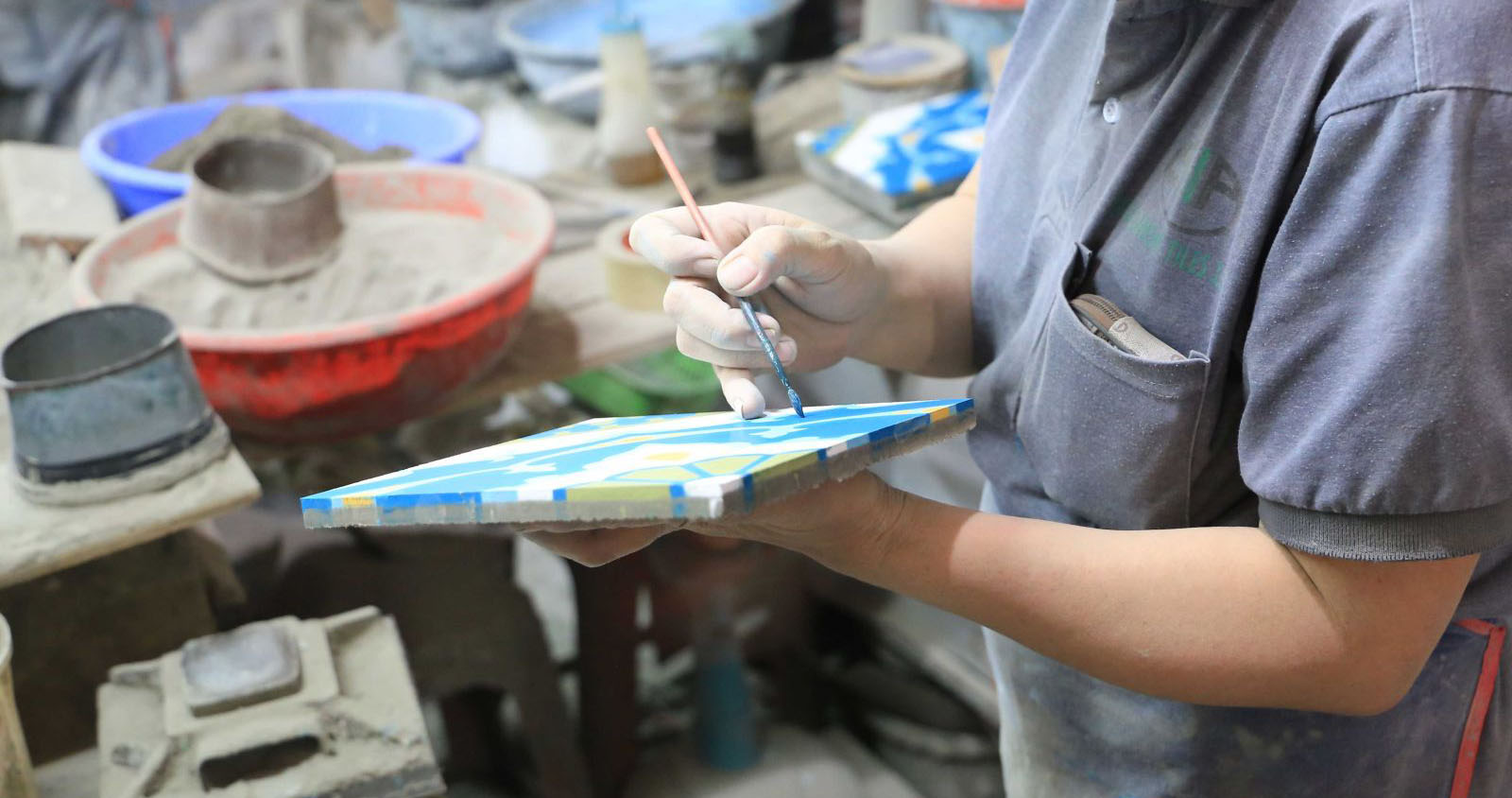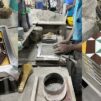
Decorative, durable and very dep – Encaustic tiles in Vietnam (part 2)
We last left you with a bit of background on the differences between glazed ceramic tiles and encaustic cement tiles and sprinkled it with a smattering of history. Let’s move onto and into Vietnam and the rollercoaster ride of this enduring craft.
It’s not often you find a silver lining associated with colonialism…
As we know, the French colonised Vietnam back in the mid-1800s. With their invasion, the foreign oppressors brought along their skills and techniques in cement tile manufacturing. Already known as highly skilled artisans, Vietnamese workers trained in encaustic tile production quickly became masters in creating these decorative tiles. Not only did they reproduce patterns taught by the French, but they developed their own styles and designs to meet local tastes.
Incidentally, it was around this time that a revolution in tile manufacturing was afoot – hydraulic presses. Not only did they help to substantially improve the quality and durability of the cement tiles, but they lowered the production costs. In addition to this, raw materials could be sourced locally, reducing the time and cost of importing them. As a result, encaustic tiles became a cost-effective alternative to the more expensive ceramic tiles that not only required kilns to be fired, but were often imported from overseas.
With only the need of a hydraulic press and skilled sets of hands, a growing number of local artisans set up their own small workshops to make and sell encaustic tiles. These workshops continued well after the French finally departed Vietnam in the 1950s and perhaps is one of the few positive legacies left behind by the colonists.
Then along came the American/Vietnamese war…
The fall – 1975 to the 1990s
After the American/Vietnamese war ended in 1975, materials and supplies became scarce. Many artisans had to leave their employment and small-scale producers started to close. While simple cement tiles continued to be made, they had become utilitarian in design, being used in public buildings such as schools and hospitals. One information source described them as a tile for the poor.
In the 1990s, ceramic tiles from China were starting to enter the market and were increasing in popularity. Not only did their mass production provide a cheap alternative to the individually hand-crafted encaustic tiles, but consumer trends were also changing. While some preferred the aesthetics of ceramic tiles, others found the glazed coating easier to keep clean.
Encaustic cement tiles were selling slowly at this time and their manufacturing base nearly disappeared. But then….
New life – onwards and upwards
The beginning of the 21st century saw another swing in design taste and the production of encaustic tiles in Vietnam was revived. Small workshops that had continued to eke out a living during the difficult years were replaced by larger manufacturers. The latter were able to streamline their production processes by incorporating modern technologies to building on the traditional methods previously used. These improvements in manufacturing, along with increased outputs and the change in consumer trends has seen a number of large companies in Vietnam producing traditional designs and creating contemporary ones for both local consumption and export. Chances are that those fabulous cement floor tiles down at your new fave restaurant were made by artisans in Vietnam!
Did someone say gorgeous home decor featuring vintage tile prints?
Encaustic tiles have so taken our fancy that we have created some lovely little products featuring some local tile designs. You can find them on our online store here, as well as selected boutiques in Vietnam.
Information sources:
Viet Tiles (also the image source)






